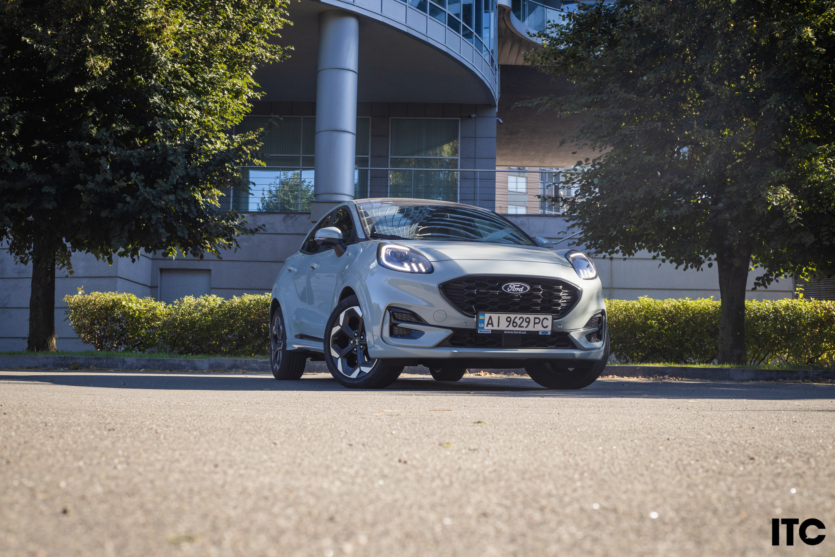
While the giants of the segment compete for the title of the best, our hero Ford Puma hides in the shadows like an underrated diamond. However, only Puma is able to quickly change its position upon closer inspection.
It seems impossible to stand out in the highly competitive environment of B-class crossovers. Where extravagant design reigns supreme Peugeot 2008 and bold Toyota Yaris Cross and every year fresh blood is added, the shy Ford Puma remains somewhere behind and is not always mentioned when choosing, but it should be.
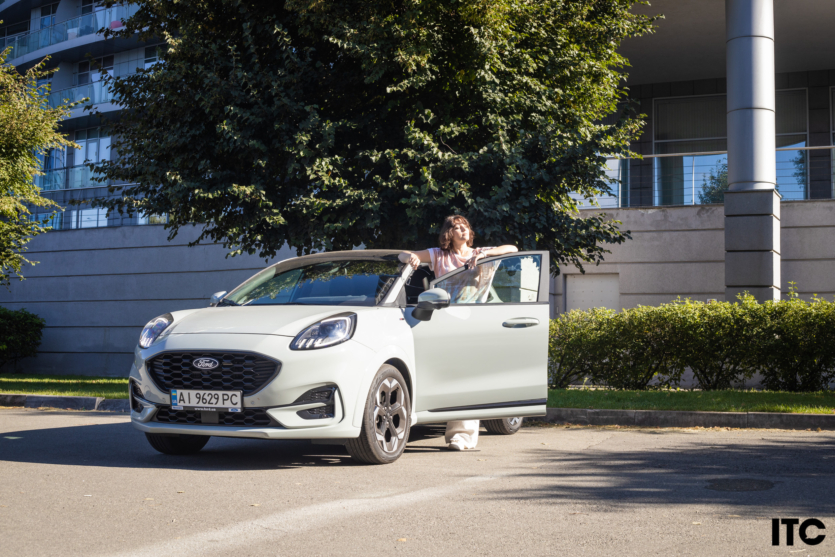 When we were looking for a car for my friend, we just happened to look in the Ford showroom and came across Puma. Even for me, it was a discovery. The compact turned out to be original in design, nimble, roomy, and technologically advanced. The only thing that stopped me was the price, because it was close to the level of the Toyota Yaris Cross. Then my friend decided on a Peugeot 2008, but..
When we were looking for a car for my friend, we just happened to look in the Ford showroom and came across Puma. Even for me, it was a discovery. The compact turned out to be original in design, nimble, roomy, and technologically advanced. The only thing that stopped me was the price, because it was close to the level of the Toyota Yaris Cross. Then my friend decided on a Peugeot 2008, but..
Today, the Ford Puma is only getting better thanks to its approach to environmental standards, richness of equipment, and easy correction of appearance. And the optics have definitely become much better than before, and the image looks more holistic. It seems that not much has been done, but the perception changes significantly. New bumpers, freshly designed wheels, and updated lighting patterns seem to make it look like a new car.
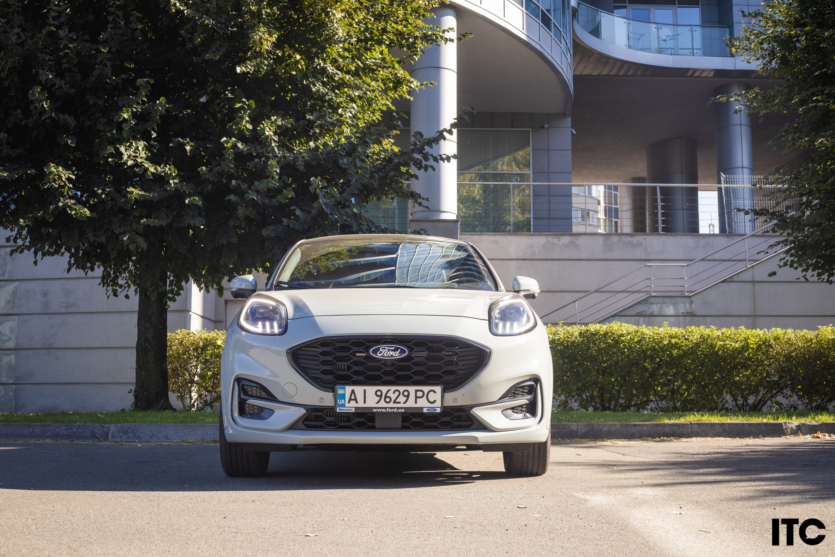
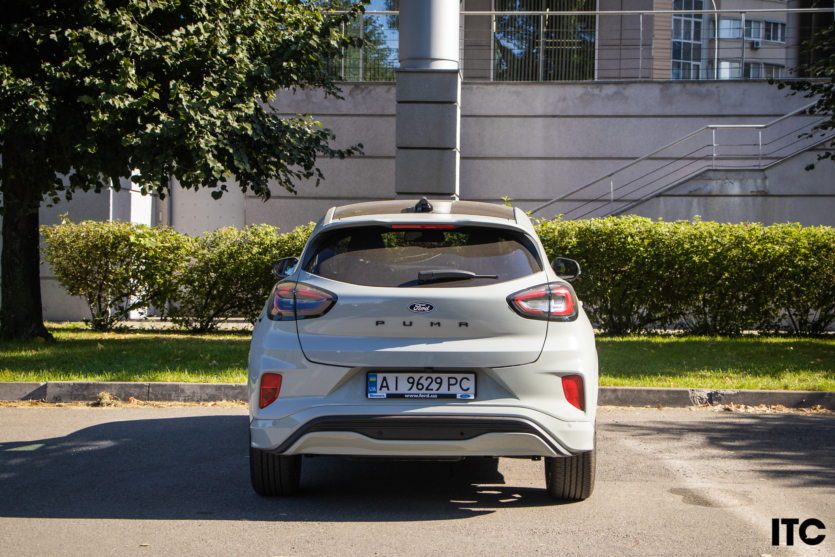
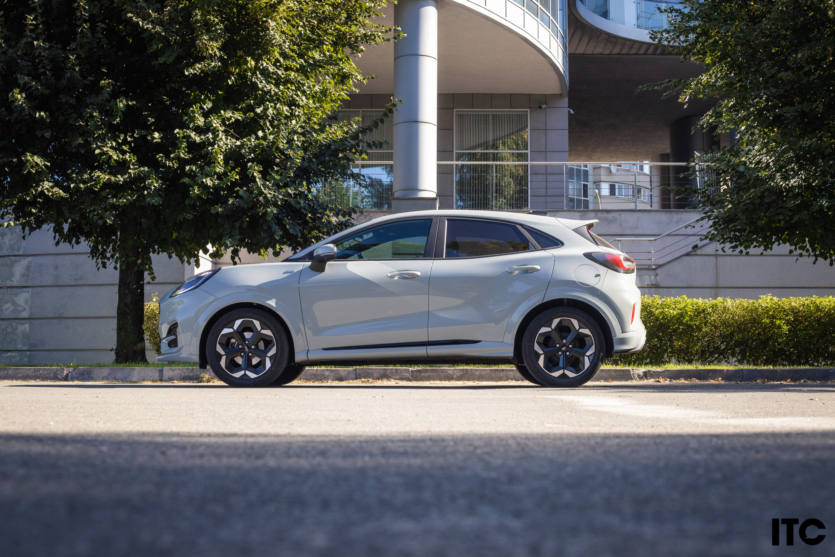
The optics are LED in a circular pattern, and the diode strip pattern has been changed. The additional three dashes in the headlights resemble animal claws; they switch to turn signal mode. Behind are the same stripes, and in the mirrors, a cat is projected onto the ground.
The dimensions of the Ford Puma remain unchanged, as does the overall silhouette. The compact looks much smaller than it actually is: 4,186 mm in length, 1,930 mm in width, 1,530 mm in height, and 2,588 mm in wheelbase. It is neither the largest nor the smallest in the segment of compact urban crossovers and holds its own in the middle, but it stands out significantly in terms of impressions.
Feline agility
If I had been told earlier that the Ford Fiesta would give way to a crossover, I would have laughed sarcastically. I still can’t believe that the small hatchback that sold so well has been replaced by this big-eyed, big-bodied guy with cat-like habits. It was all the more interesting to talk to him. And the first thing we can say is that heredity is felt here in the habits. It’s okay that it has the branded EcoBoost with three cylinders and a volume of one liter. Ford has always known how to customize compacts.
Now the engine has been given a little more turbocharging, and the integrated hybrid system hides the turbos. It is based on a 48-volt starter-generator system that adds energy recovery during braking and the ability to roll with the engine off. Plus, it provides torque compensation at lower speeds for better throttle response and acceleration.
A small 15 hp (54 Nm) Ford Puma electric motor is integrated into the box and can pick up and add instant power at the right time. Amazing agility that makes driving a compact crossover fun and quite attractive. Combined with the improved steering, you can feel the pleasure of driving every moment.
We are offered two versions of the hybrid system: 125 hp and 155 hp, as in our test ST-Line X. The difference will be felt more during acceleration, but not significantly. The maximum version will also offer additional bells and whistles in the form of adaptive high beams, 360 cameras, and adaptive lane-keeping cruise.
The Ford Puma offers a perfectly healthy level of performance for mixed driving and a well-defined and pleasant shift stroke. The 7-speed automatic (dual-clutch AT/DCT) is smooth and stable, as expected. There are no lags or oversteer. The system works perfectly as a whole. Not a single thought of complexity arises. Only in reality, this ease hides a lot of work by engineers and a subtle and intelligent control system for all components.
For example, you won’t think twice about the engine deactivating cylinders whenever possible — a feature that was available on earlier versions. The Ecoboost can easily shut down the cylinders in 14 milliseconds under light load, and when driving on a rolling road, it can shut down and move entirely thanks to the hybrid system. No, this is not a full-fledged hybrid or even a system like the Jeep Avanger, but it is very similar in functionality. As a result, fuel consumption will remain around 7 liters.
The Ford Puma’s handling is mostly reminiscent of the Fiesta. In part, you even begin to think that even the VW Golf loses here. However, such a comparison is inappropriate, and it is better to leave it aside. After all, the compact has enough competitors in its weight category that it puts them to shame when it comes to handling.
It is much more difficult for it to stand out in noise insulation. However, everything is very good here. The engine’s growl is annoying only in sport mode or during fast acceleration, and in general it is not heard. Even the Toyota Yaris Cross loses here, because there is too much noise from the engine, as well as from the road. Only it loses to the Jeep Avenger, Peugeot 2008, and even the Mokka.
It seems that the Puma was designed more as a hatchback with crossover features, because the ground clearance is not so great – about 17 cm — and the suspension is balanced and elastic. The passage of even significant bumps is swallowed with inexplicable ease. After all, the chassis itself is standard for this segment with a familiar configuration. There are even drum brakes at the rear.
For a B-Class compact that makes it easy to have fun thanks to its quick and lively handling, it’s nice to feel that the ride’s refinement has been preserved. Ford Puma’s amazing suspension setup delivers a good combination of crisp body control and smooth handling during high-speed driving, allowing it to confidently smoothly overcome successive low-frequency bumps.
Safety under insurance
I’m pleased to see maximum functionality available in small compacts, which comes to the rescue in difficult moments or simply makes it easier to operate. It’s like a good friend who is always there to support you. There is, however, a fine line between intelligent assistants and conventional software standards that do not adapt to the situation, but do not make their own adjustments either. Ford Puma offers us a balanced middle ground.
In the top version of the ST-Line X, we have almost the maximum: adaptive lane-keeping cruise, which is capable of operating at any speed, stopping, starting, and generally moving independently even in traffic. It keeps a good distance, which can be adjusted, keeps you in the middle of the lane, and sees the speed limit. It’s good that it doesn’t change the indicators like Kuga does.
All-round cameras have several detailed angles that can be selected and zoomed in on details — convenient in a city where these “stone mushrooms” are everywhere and you can’t always see them. The camera quality only deteriorates during a downpour, and on a quiet night the image is almost perfect.
In general, the B-Class now has a wide range of assistance systems and a significant level of safety. It’s hard to single out a particular system. Only the budget segment lags behind, as the Renault Kardian or Skoda Kamiq. The ship offers a standard cruise and small optional packages.
Salon harmony
Significant progress has also been made in the interior, which now features a 12-inch digital multimedia monitor instead of the 8-inch one in its predecessor. In general, the architecture of the Ford Puma has changed slightly, and the instrumentation has been moved back to the driver. The maximum function is given to the large screen with the latest generation of Ford Sync4. The system responds quickly to touch, the algorithms are clear and not confusing, the graphics are clear and pleasant. In general, everything is even better than in VW. And of course, there is wireless smartphone connection and wireless charging.
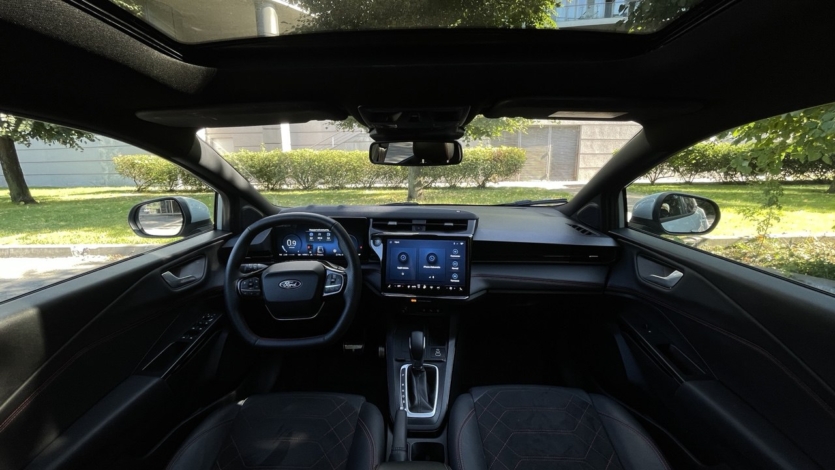
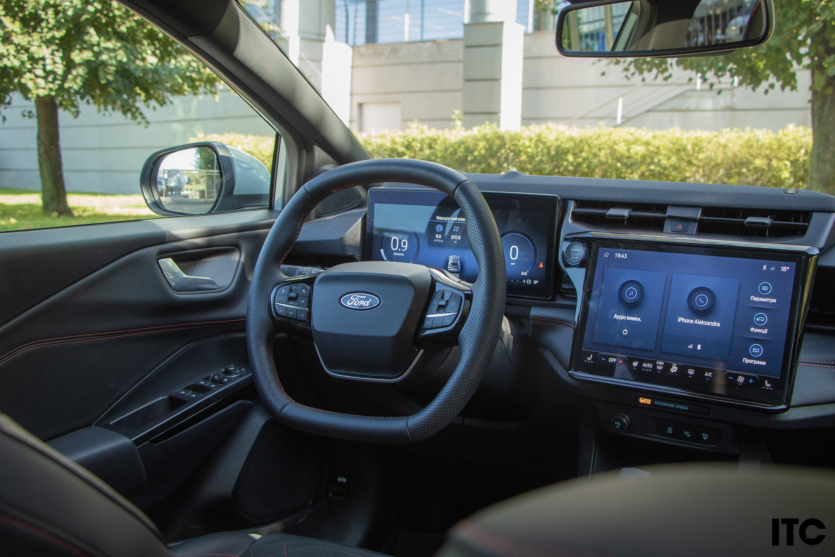
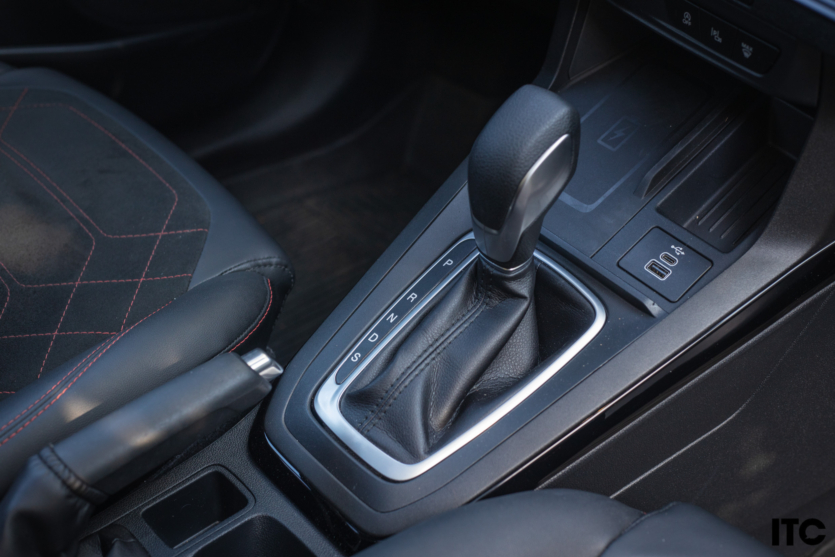
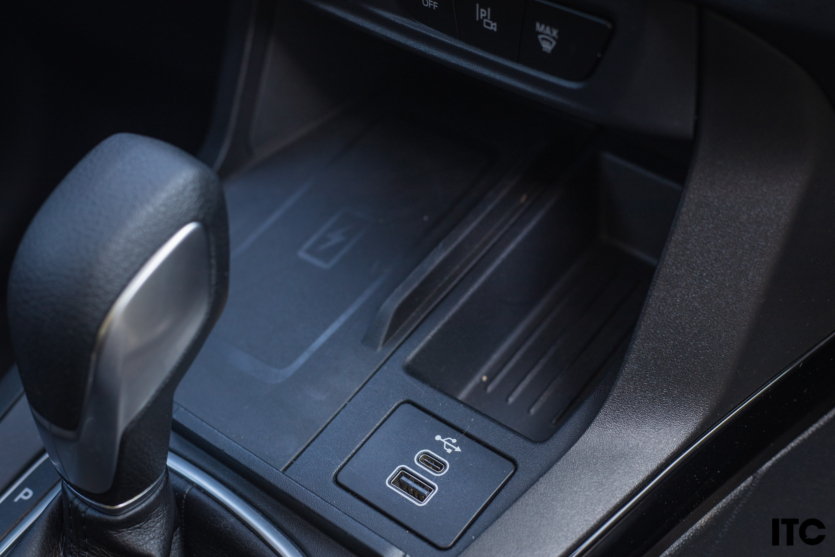
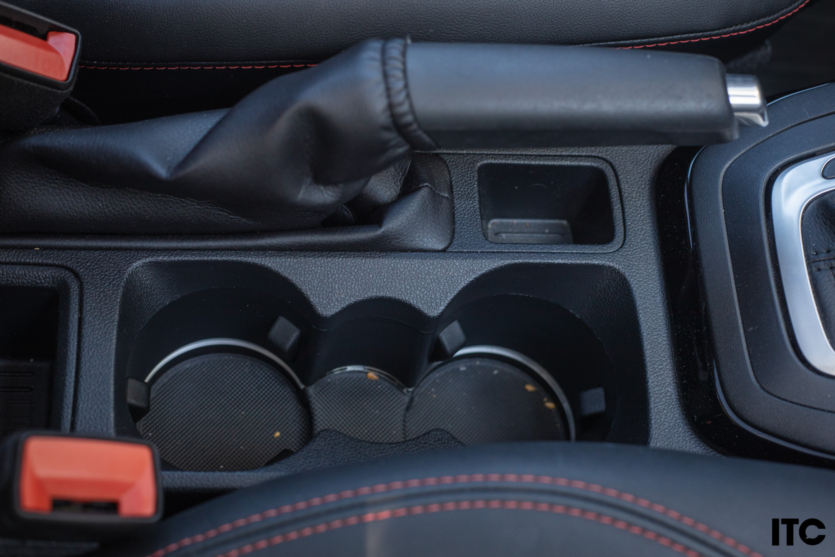

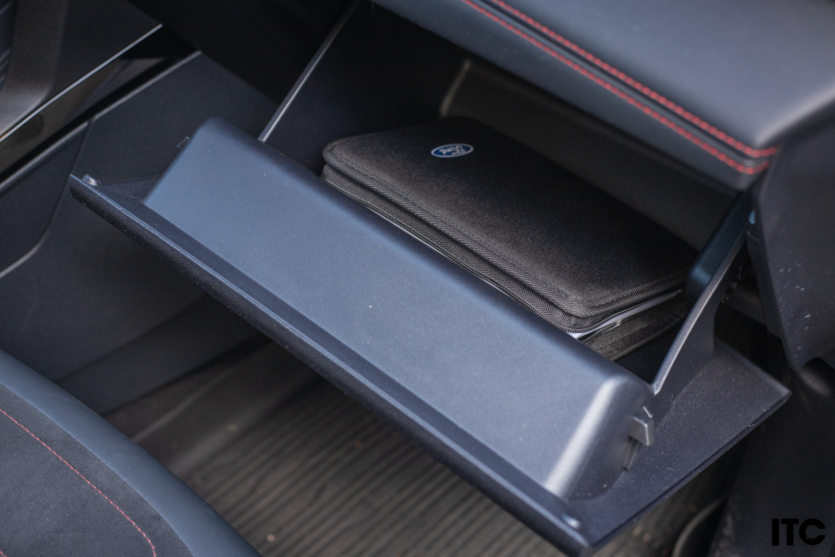
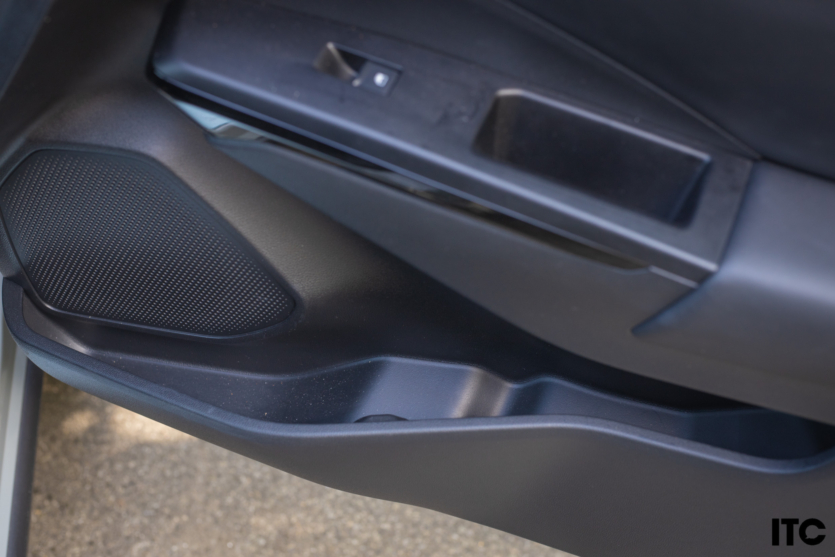
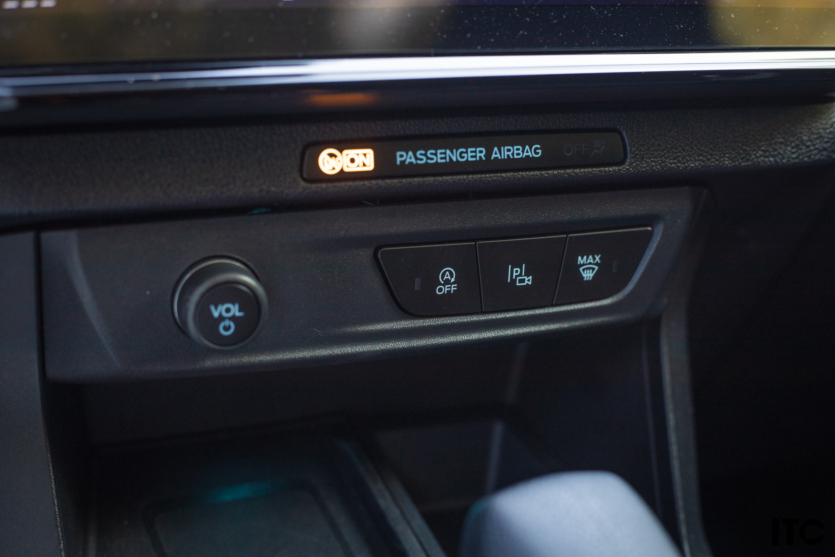
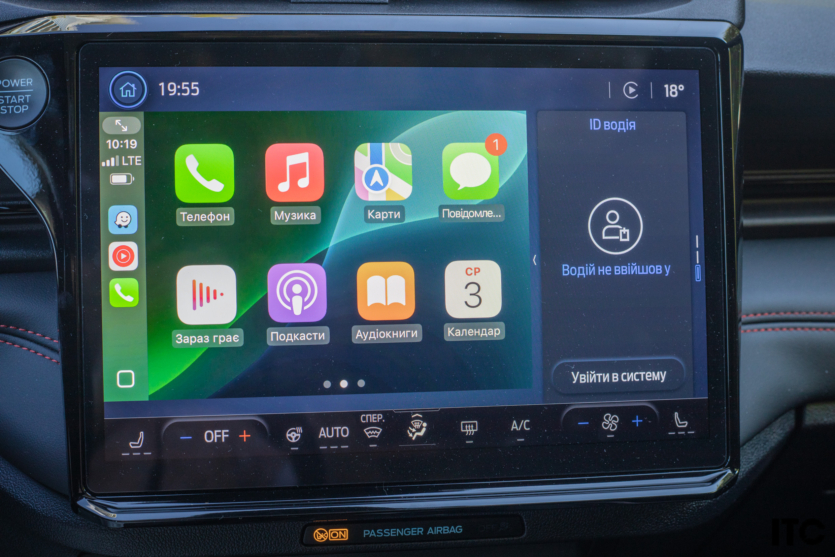

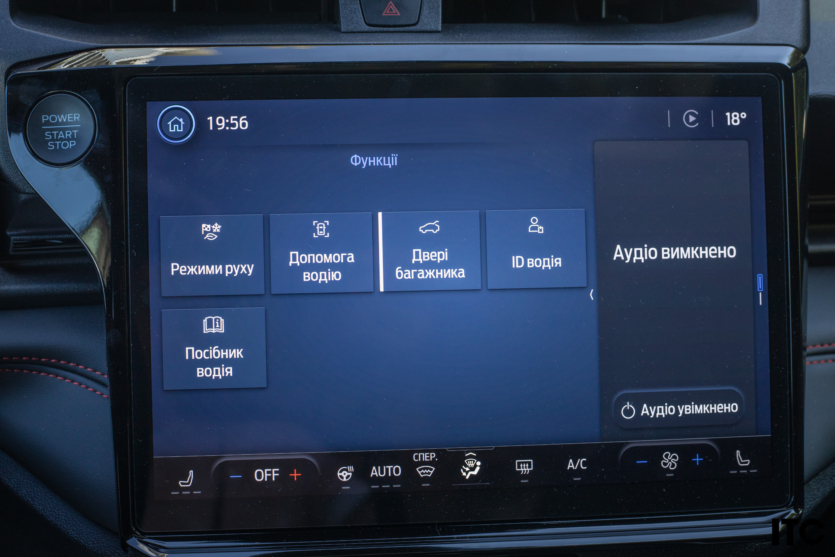
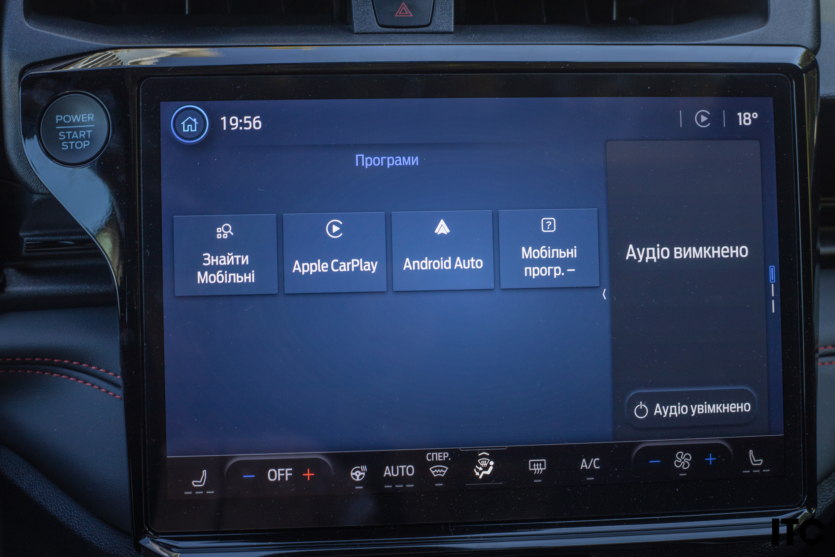
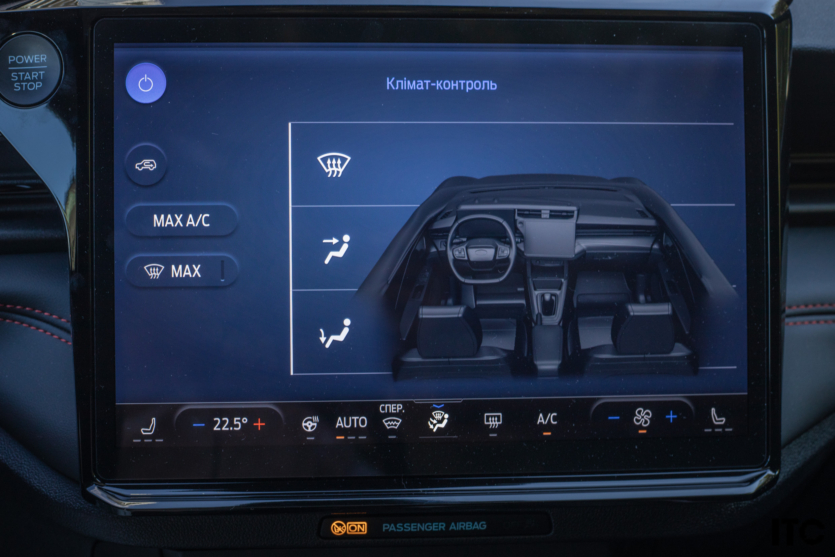
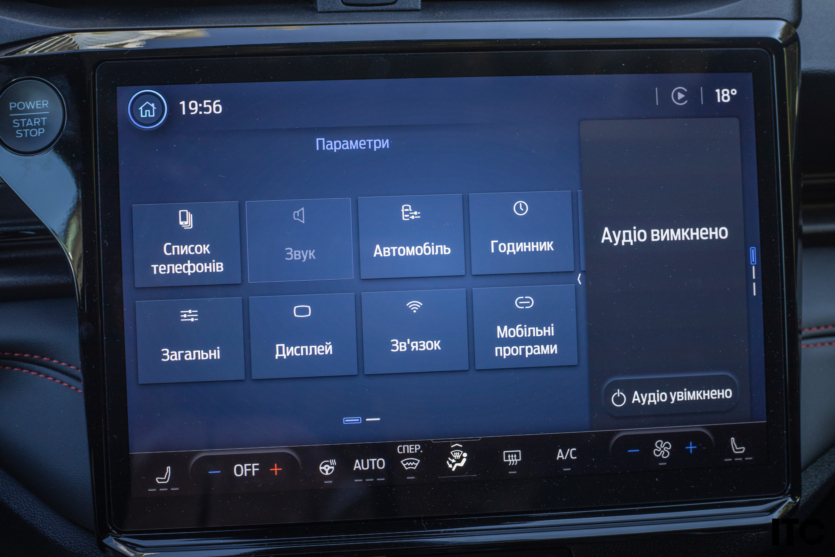
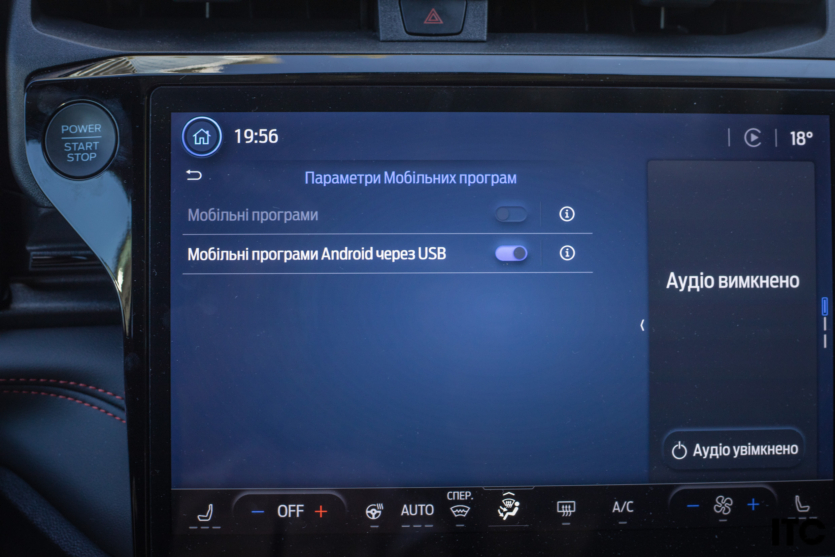
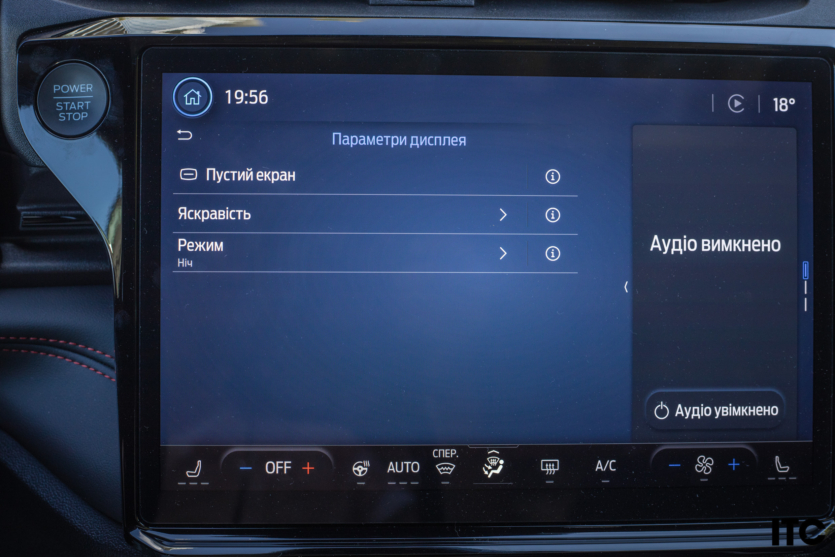
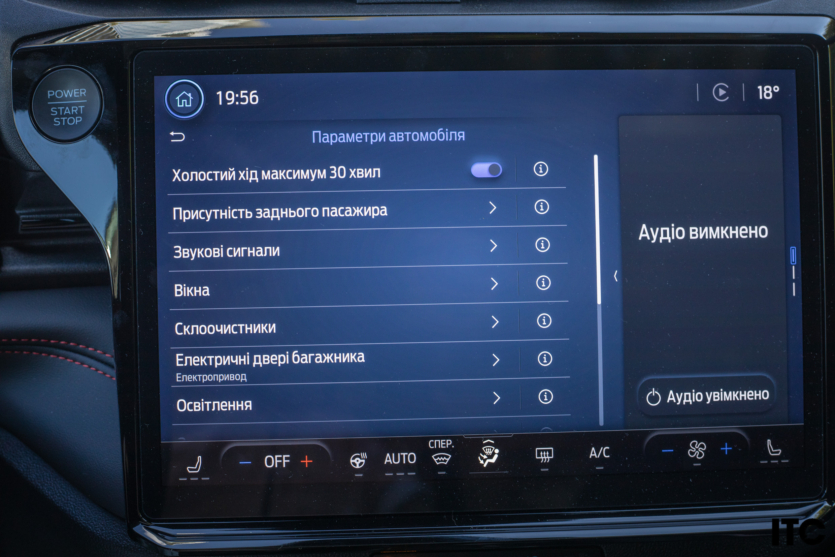
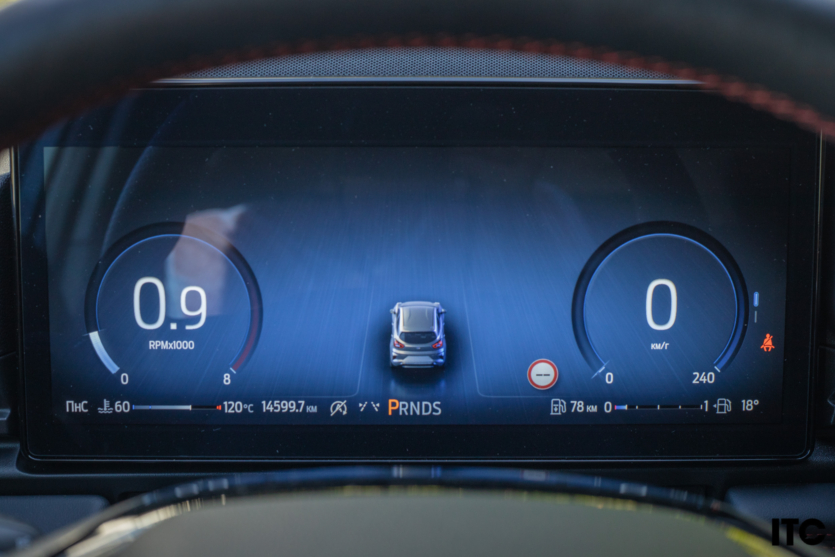
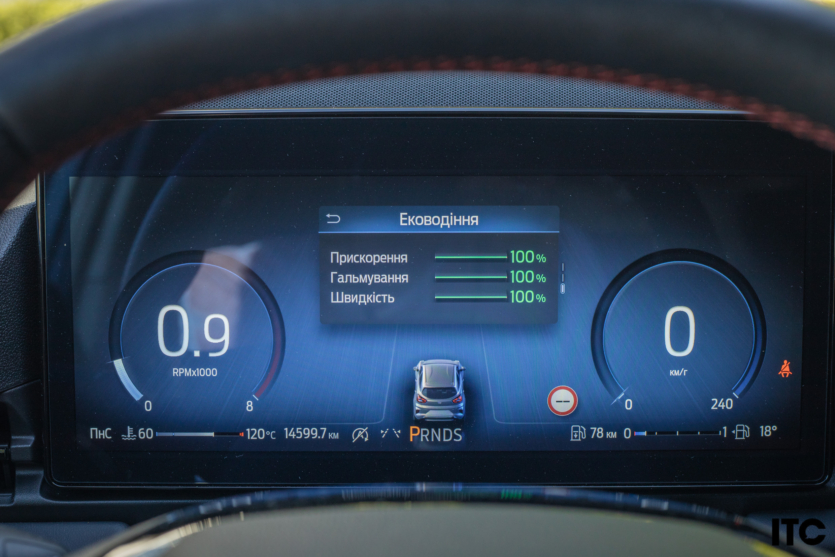
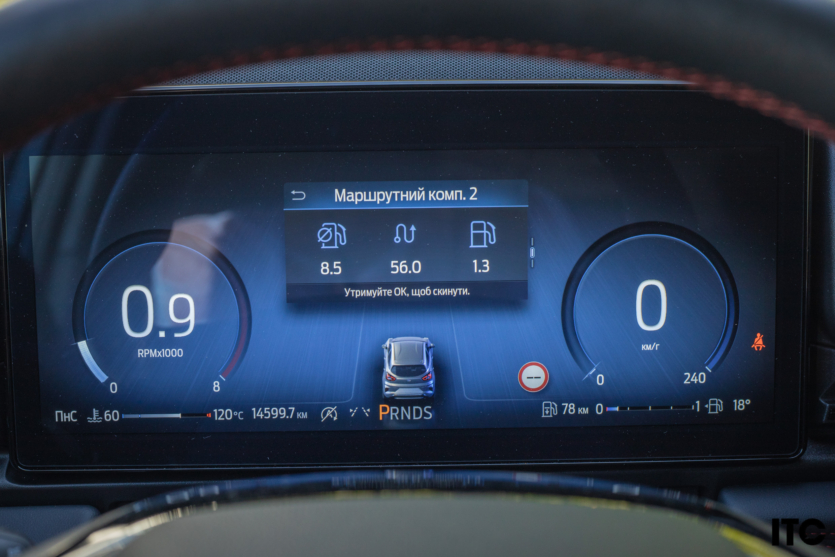
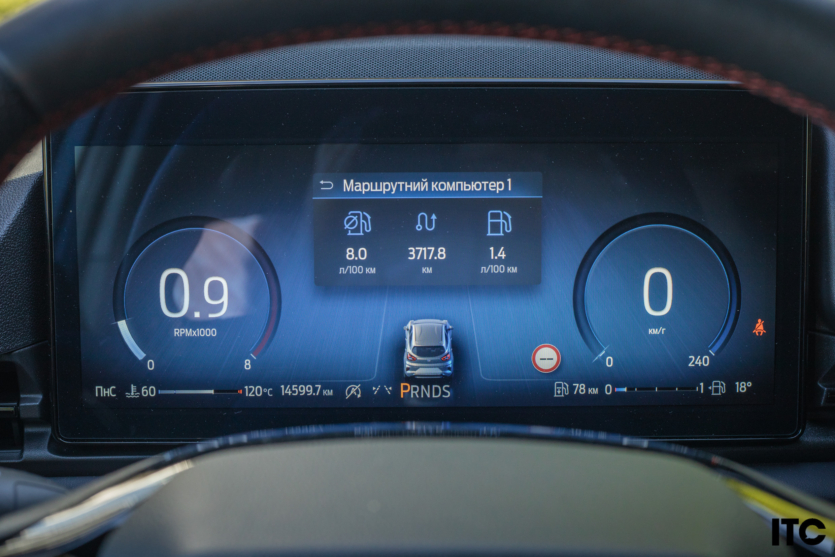
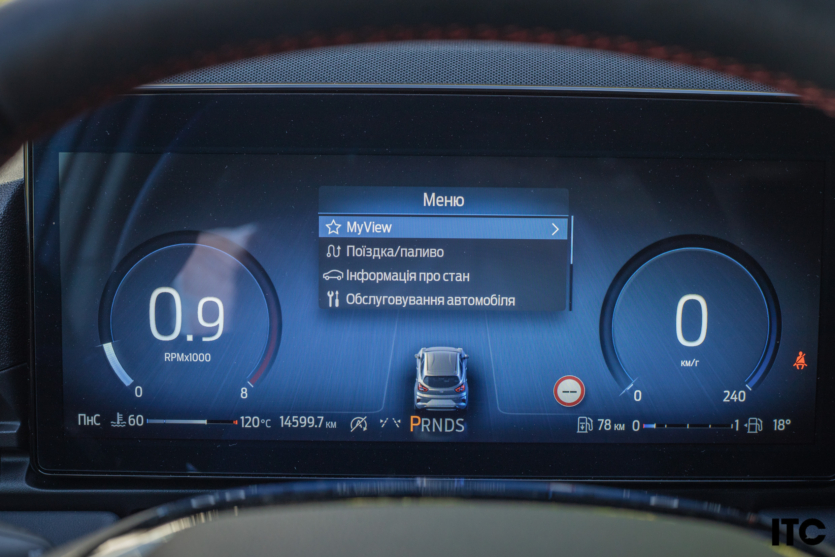
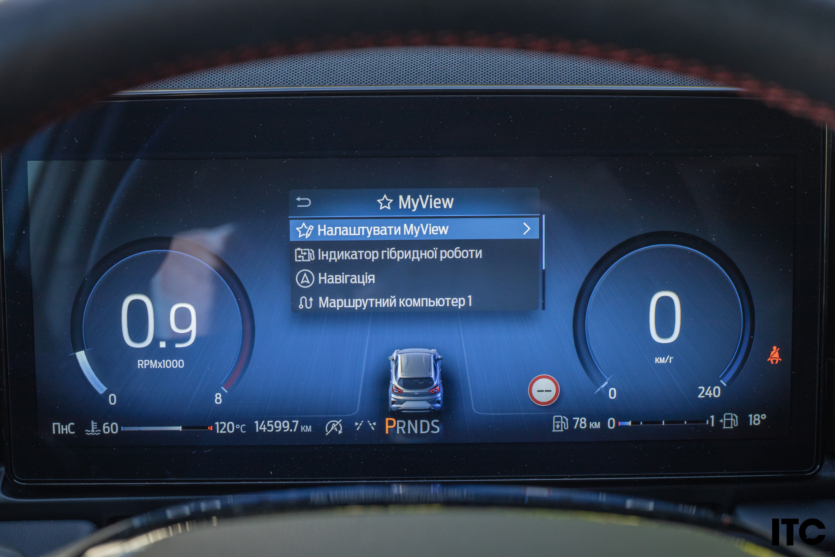
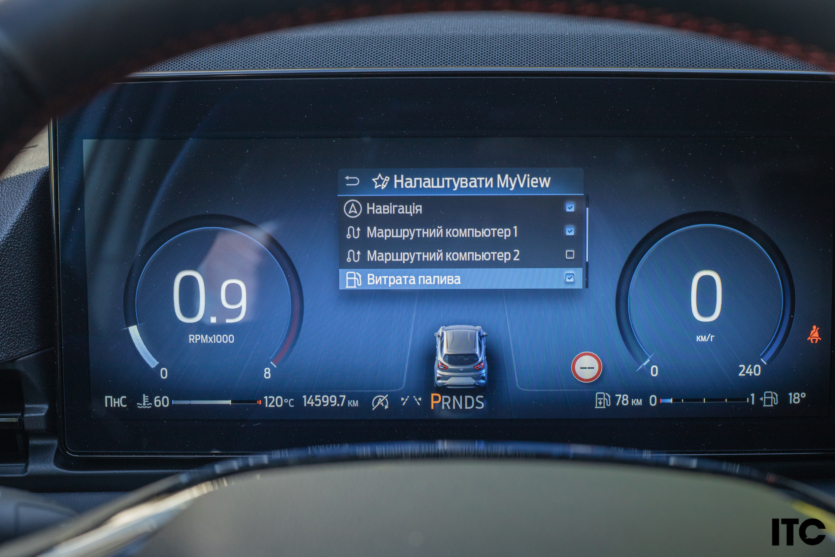
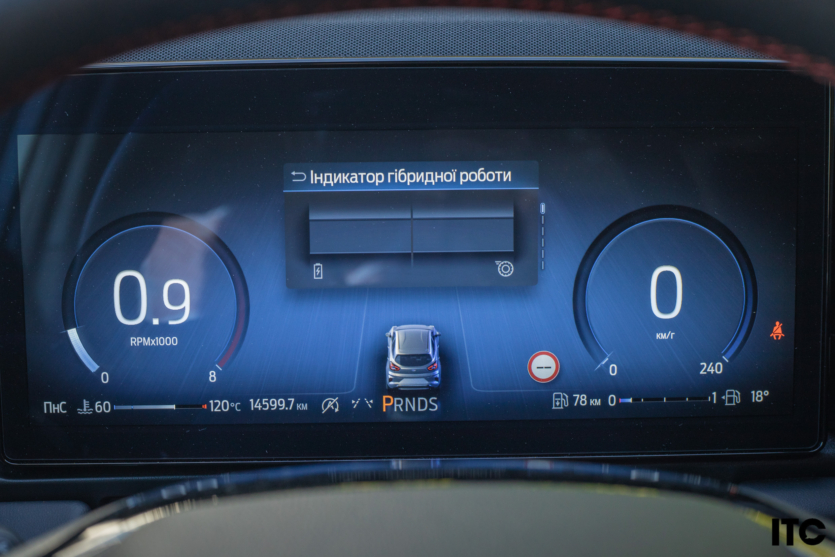
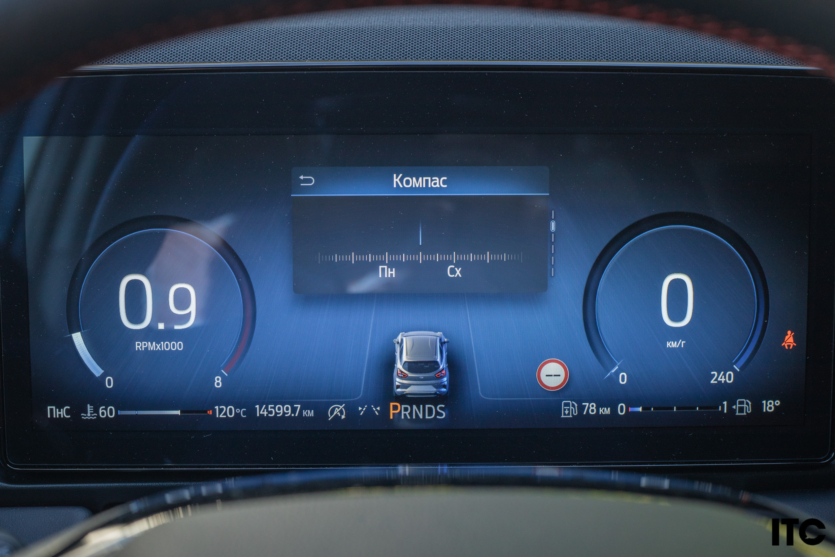
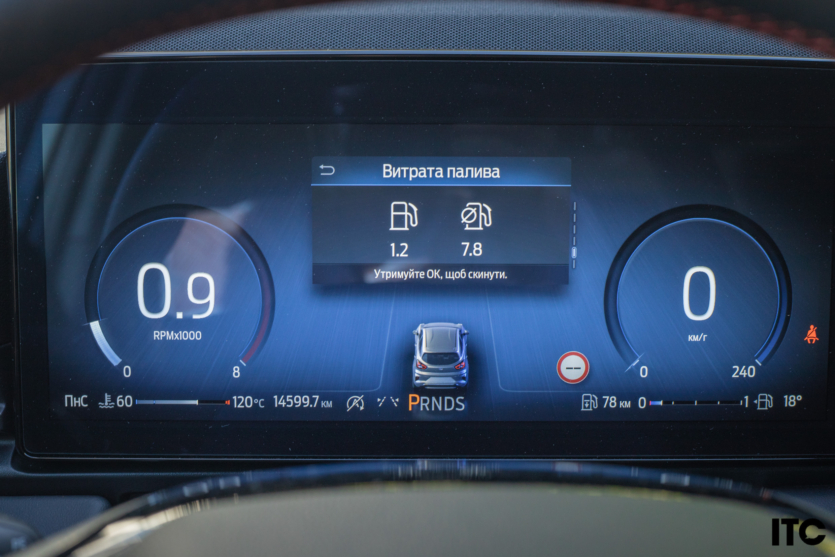
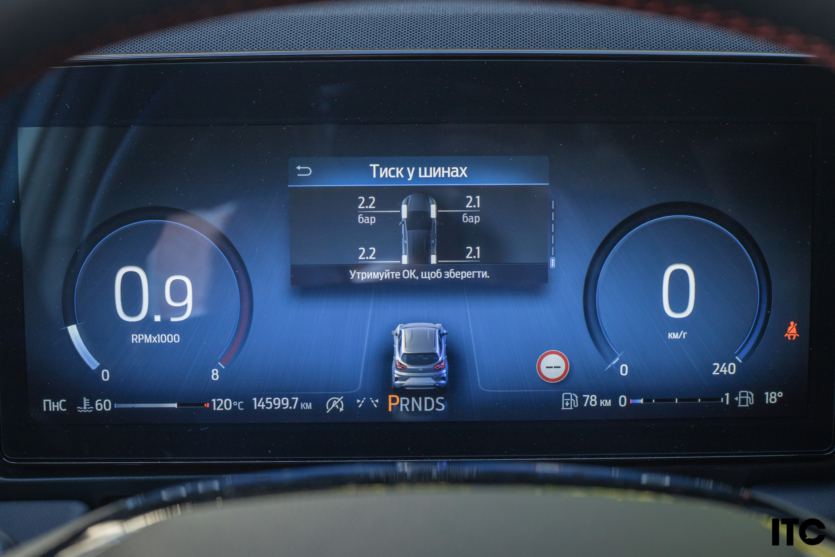
Surprisingly, the Ford Puma doesn’t feel cramped at all. Here, the front console is maximally raised and legroom is freed up, the steering wheel seems to hang over your lap, and the seat and steering wheel adjustments are surprisingly wide. I also usually use the maximum steering wheel positions — up and pushed to my side. Here, I didn’t have to push it to the maximum and the middle position was enough to get me in the right position.
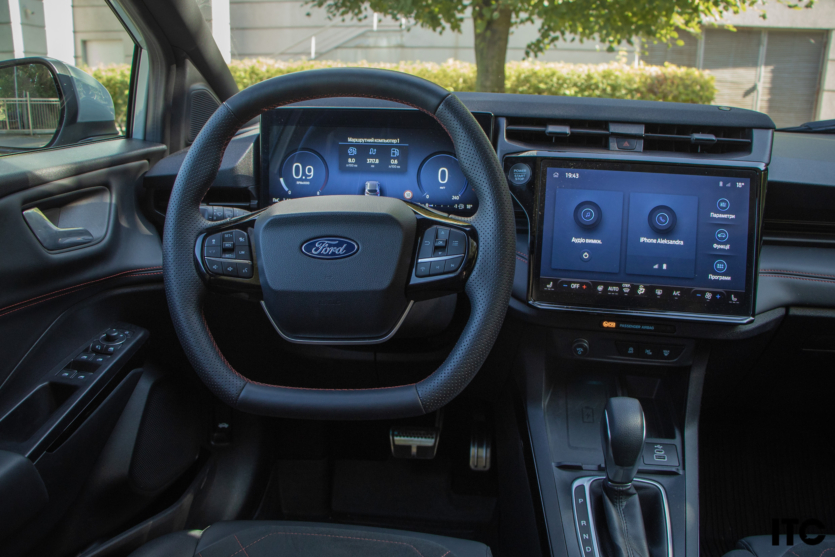 Only the size of the steering wheel was a bit disappointing. It is double-spoke and quite large in diameter— an unusual thing in a small car. However, you quickly get used to it and it seems that it should be so.
Only the size of the steering wheel was a bit disappointing. It is double-spoke and quite large in diameter— an unusual thing in a small car. However, you quickly get used to it and it seems that it should be so.
Instead of a fancy gearshift paddle, there’s a full-fledged lever, for which we’re especially grateful to the manufacturer. And even cooler — they left the usual lever for the parking brake. It’s just a great way to have fun while driving. They definitely knew something. It’s very easy to twist the car into sharp turns, just like parking. The dimensions of the Ford Puma are felt instantly, the visibility is excellent, and the cameras only help to navigate and see the little things that can be missed. And yes, there is no front camera here, which is surprising given the presence of 360 cameras.
It’s strange that they removed the steering wheel paddles and didn’t even bring out the buttons for switching driving modes — everything is enabled only in the settings. They also moved the wiper control to the left lever under the steering wheel. Now it has too many functions, and the right one was simply removed, leaving an empty plug. Perhaps this solution will be continued, but obviously not in this restyle.
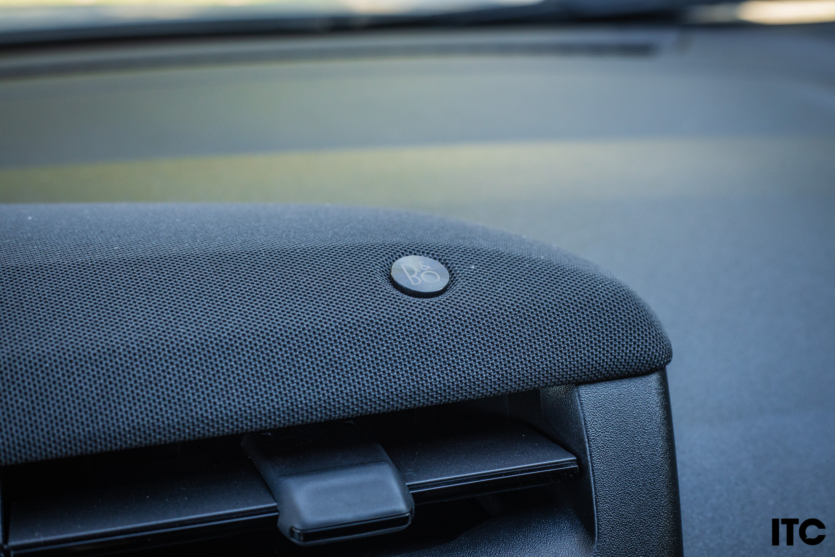 If we are to praise Ford, it is for the integration of incredible acoustics. Puma employed craftsmen from Bang & Olufsen. This is a Danish brand founded in 1925 that made acoustics for Audi, Bentley, Mercedes, and others. In 2016, Ford replaced Sony with B&Q Play, a line with a more youthful orientation. So now almost all Ford models have premium acoustics integrated into them. It impresses from the first notes. And Puma has 10 speakers throughout the cabin and a large soundbar in front of the dashboard, which adds power to the overall harmonious sound.
If we are to praise Ford, it is for the integration of incredible acoustics. Puma employed craftsmen from Bang & Olufsen. This is a Danish brand founded in 1925 that made acoustics for Audi, Bentley, Mercedes, and others. In 2016, Ford replaced Sony with B&Q Play, a line with a more youthful orientation. So now almost all Ford models have premium acoustics integrated into them. It impresses from the first notes. And Puma has 10 speakers throughout the cabin and a large soundbar in front of the dashboard, which adds power to the overall harmonious sound.
The atmosphere is spoiled only by a detailed examination of the materials used in the trim. While the seats here are quite comfortable with strong side support, the surrounding plastic is overtly hard and coarse. It seems that Ford has directly emphasized its roughness by combining it with soft, expensive suede upholstery and some eco-leather panels on the dashboard.
The rear sofa with an almost vertical backrest is not comfortable enough either. There is plenty of legroom as well as headroom. In general, this space is even impressive, but it is not comfortable to travel for a long time in this position, and you want to lean back a little. However, there is no such function. It’s good that at least they left the outputs for charging gadgets.
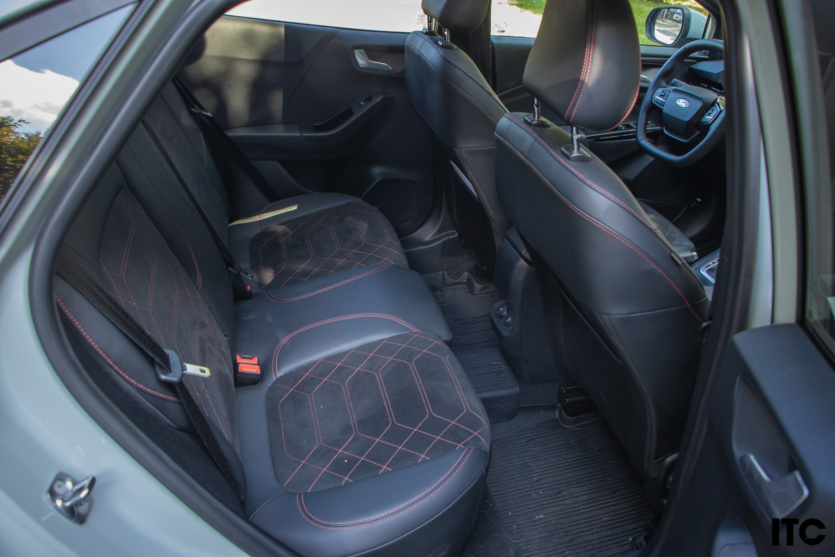
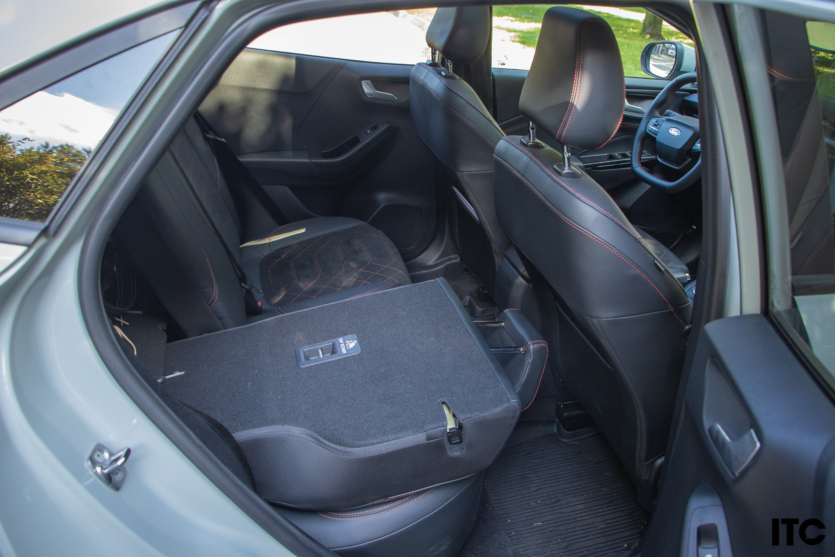
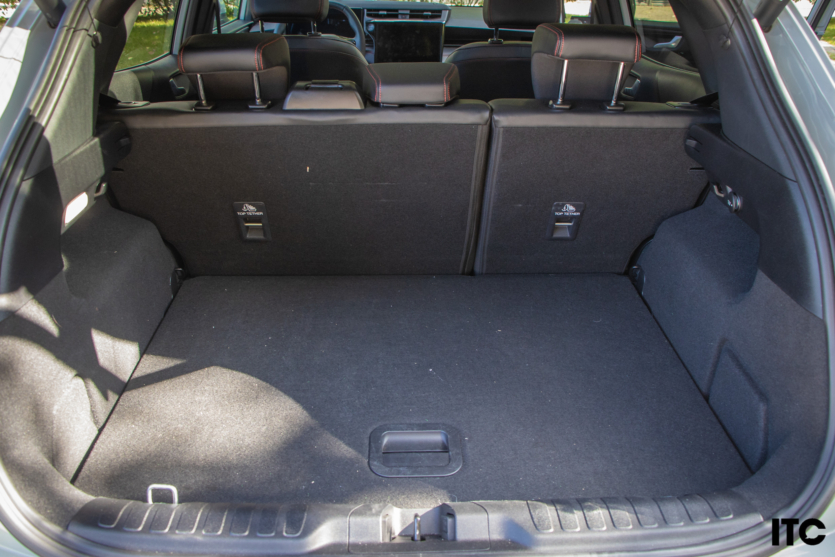
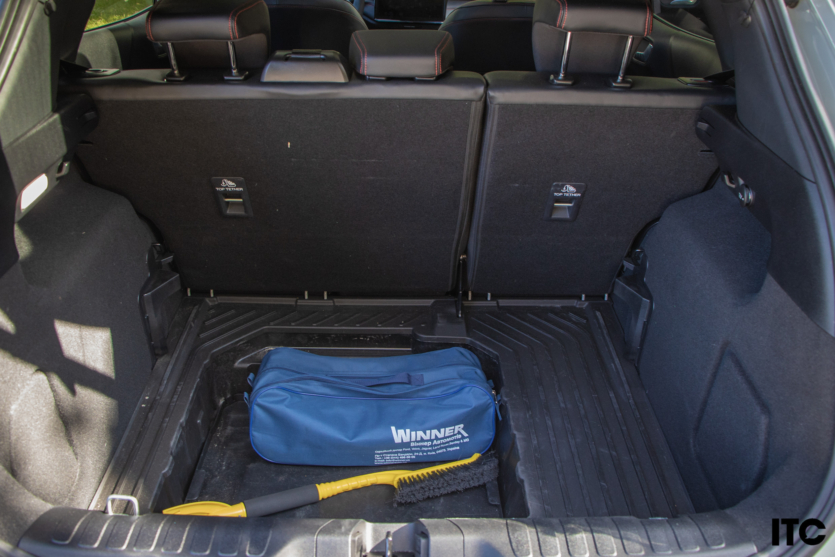
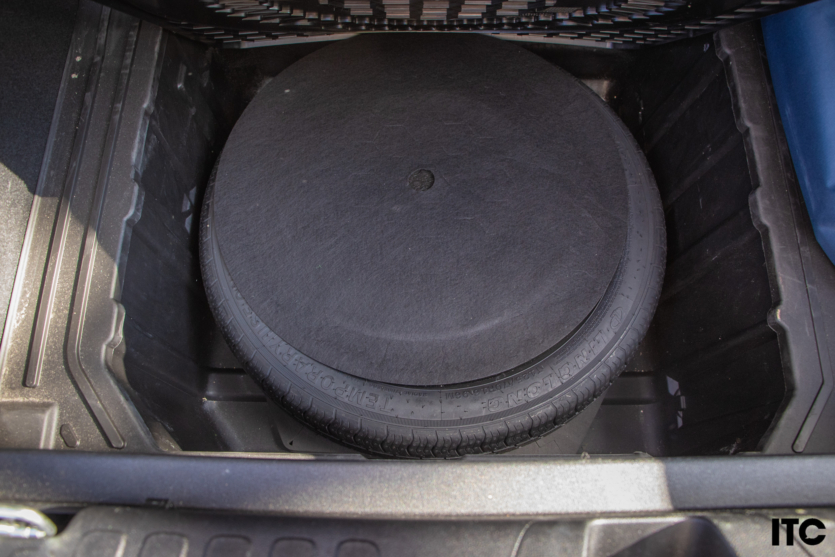
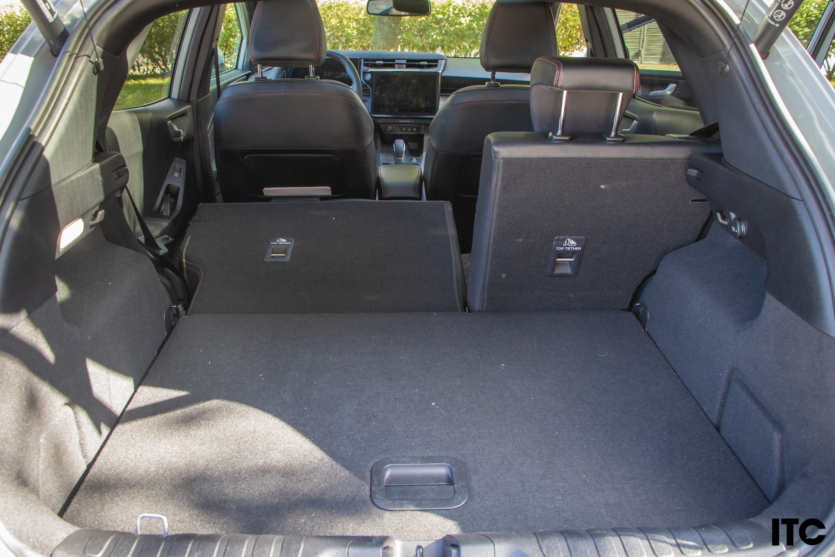
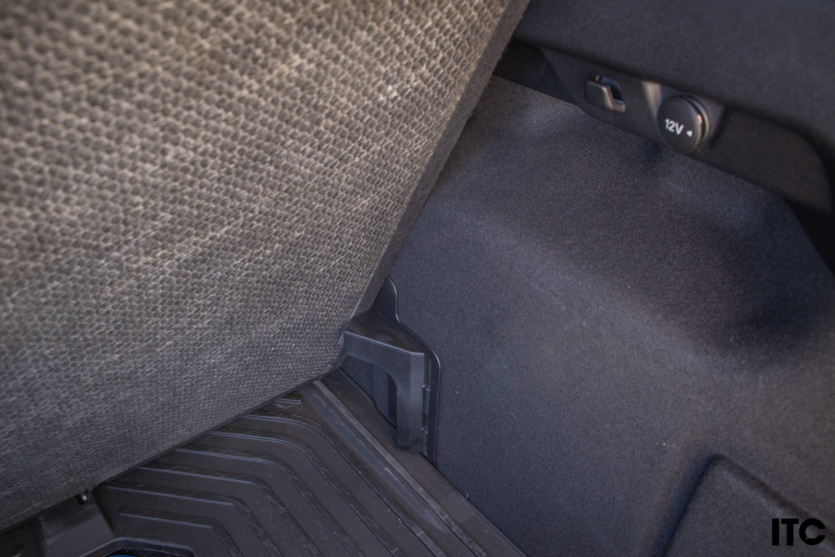
However, in terms of space and capacity, the Ford Puma is among the segment leaders. Here, the trunk has a volume of 456 liters and an additional niche under the floor, which has a third bottom with a spare tire. The VW T-Roc has a 455-liter trunk, and the Skoda Kamiq has a 400-liter trunk. In addition, the floor in the Ford Puma can be set at two levels, and there are convenient holders for this cover. The main thing is that it does not start rattling and bouncing while driving over time.
Conclusions and positioning
The introduction of the Ford Puma made a splash in Europe and showed that Ford was still capable of surprising. The compact reflected modern styling, picked up the crossover fashion and brilliantly represented the manufacturer’s long-standing core strengths. Our updated hero continues the legacy with dignity with several technical updates, integration of environmental friendliness, necessary functional improvements, and unsurpassed handling.
The fresh appearance gave it a distinctive appeal and made it stand out from the crowd, but it did not fully reflect its truly valuable qualities: liveliness, economy, ease, and pleasure of driving. Ford Puma could easily have been a segment leader, if not for a few minor issues.
It is more pleasant to drive than the Kamiq and T-Cross, as smooth as the Peugeot 2008, and more practical than the Mokka. Given that the smaller Fiesta has already been discontinued, this option is just as good, maybe even better. And if you’re not intimidated by its looks, be sure to add Puma to your list when looking for a car.
PROS: handling, liveliness, omnivorous suspension, roominess, manufacturability, security systems, audio system.
CONS: cost, quality of materials in the cabin, rattling doors.
| Body, type | CUV |
| Dimensions (LxWxH), mm | 4186x1930x1550 |
| Wheelbase, mm | 2588 |
| Declared ground clearance, mm | 170 |
| Trunk volume, liters. | 456 |
| Curb weight, kg | 1368 |
| Engine, cm3 | 999 |
| Power, hp. | 155 |
| Torque, Nm | 190 |
| EV power, hp. | 15 |
| EV torque, Nm | 54 |
| Li-ion battery, kWh | — |
| Type of drive | 2WD |
| Pendant | Independent McPherson/ semi-independent |
| Transmission | 7AT/DCT |
| Dynamics 0-100, s | 8,7 |
| Maximum speed, km/h | 200 |
| Fuel consumption, l (mixed) | 6,3 |
| Cost, UAH | From 1 055 000 |
| The cost of the test car, UAH | 1 264 102 |
| Competitors | Toyota Yaris Cross |
| Nissan Juke | |
| VW T-Roc | |
| Skoda Kamiq | |
| Peugeot 2008 | |
| Jeep Avenger |

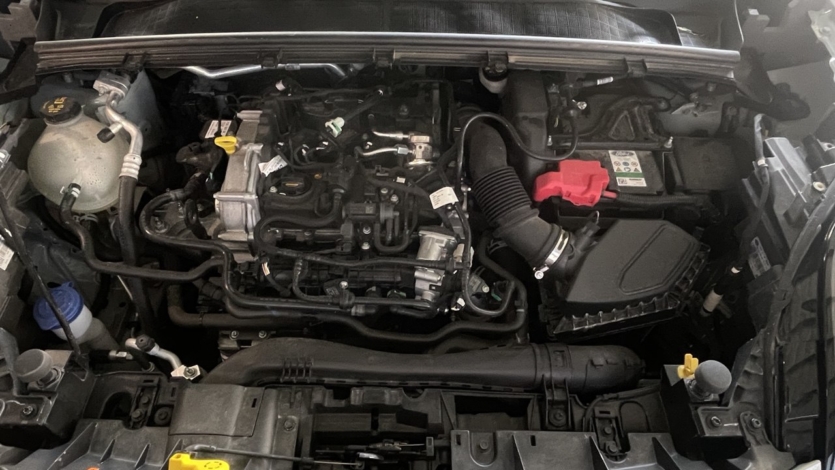
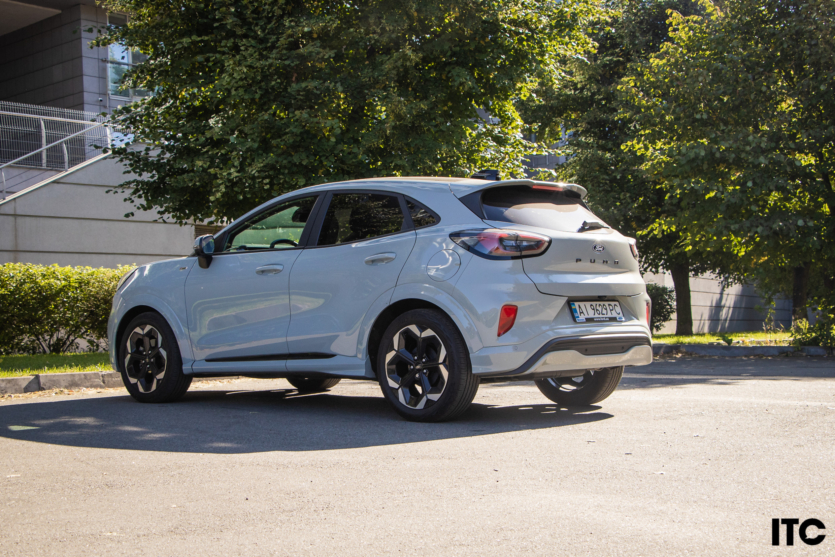
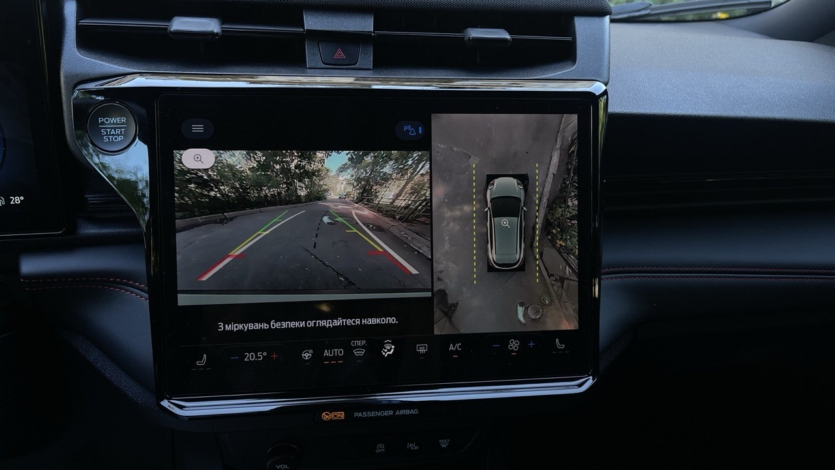
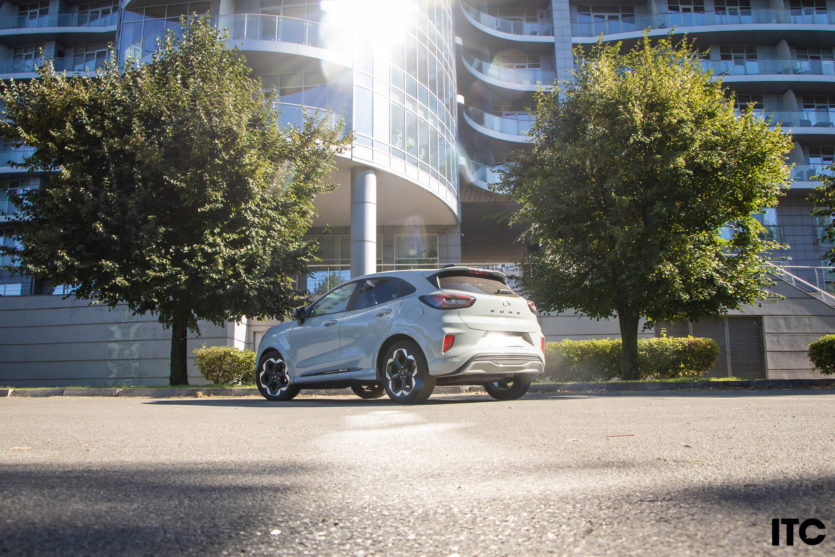
Spelling error report
The following text will be sent to our editors: